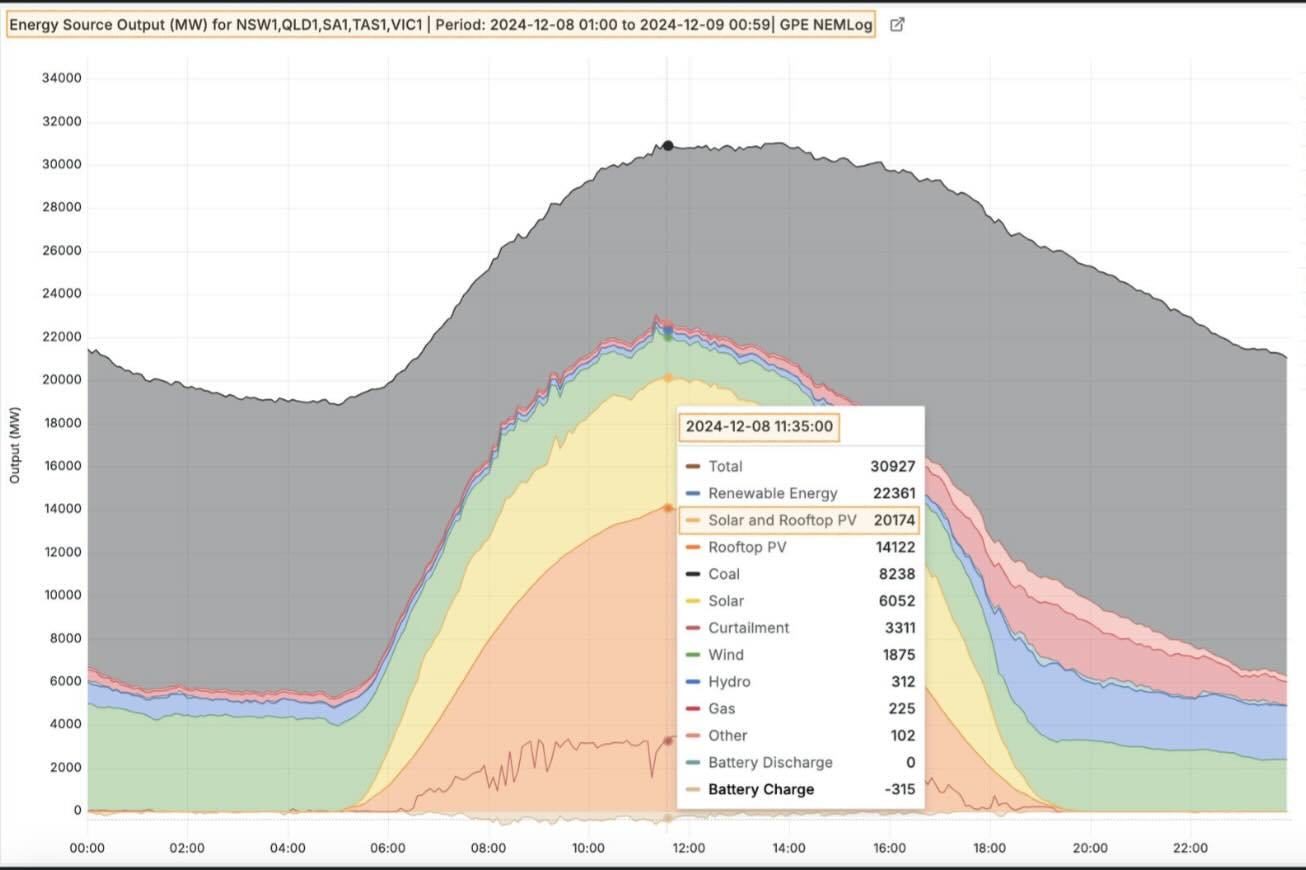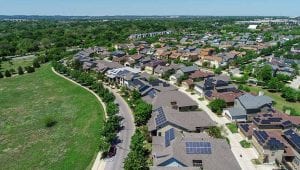The past week saw all-time solar and rooftop PV generation records across the National Electricity Market (NEM), with the southern regions (Tasmania, South Australia and Victoria) setting new benchmarks.
Notably, NEM Solar and Rooftop PV generation exceeded 20,000 MW for the first time, marking a major milestone in Australia’s renewable energy journey and reinforcing the need to plan for a future-ready NEM.
The highlights of the new solar and rooftop PV records in the past week were:L
1. Sun 08 Dec 2024, 11:35 hrs – Maximum Instantaneous NEM Solar and Rooftop PV Generation reached 20,173.8 MW, surpassing the previous record of 19,773.7 MW set on Mon 02 Dec 2024 at 11:20 hrs, up 400.1 MW.
2. Sun 08 Dec 2024, 12:15 hrs – Maximum Instantaneous Vic Rooftop PV Share hit 67.8%, up 0.89% from 66.9%, set on Sat 12 Oct 2024 at 13:00 hrs.
3. Wed 04 Dec 2024, 12:30 hrs – Maximum Instantaneous Vic Solar and Rooftop PV Generation reached 3,664.6 MW, up 115.95 MW from 3,548.6 MW, set on Wed 20 Nov 2024 at 11:30 hrs.
4. Wed 04 Dec 2024, 12:00 hrs – Maximum Instantaneous Tas Solar and Rooftop PV Generation hit 252.5 MW, surpassing 239.7 MW from Mon 11 Nov 2024 at 12:30 hrs, up 12.72 MW.
5. Wed 04 Dec 2024, 12:35 hrs – Maximum Instantaneous Tas Rooftop PV Share reached 23.4%, up 2.41% from 21.0%, set on Fri 12 Apr 2024 at 11:30 hrs.
6. Wed 04 Dec 2024, 12:45 hrs – Maximum Instantaneous SA Solar and Rooftop PV Generation rose to 2,414.2 MW, surpassing 2,318.4 MW on Thu 14 Nov 2024 at 13:00 hrs, up 95.77 MW.
7. Wed 04 Dec 2024, 13:00 hrs – Maximum Instantaneous SA Rooftop PV Generation reached 1,847.3 MW, exceeding 1,845.0 MW on Tue 19 Nov 2024 at 13:00 hrs, by 2.3 MW.
The rise in Solar and Rooftop PV generation highlights the need for grid flexibility and accurate forecasting. Since rooftop PV output depends on millions of individual systems, precise solar forecasting is essential.
Tools that factor in weather, temperature, and cloud cover help the grid adapt by adjusting loads, deploying batteries, and increasing flexible generation when solar dips. This reduces power imbalances and grid instability.
Unlocking Flexibility at Scale
To manage fluctuations, incentive-driven solutions will be key:
– Dynamic Pricing: Real-time electricity prices encourage demand shifts to peak solar hours.
– Demand Response Programs: Consumers are paid to reduce energy use when solar output and reserves are low.
– Smart Appliances & Home Energy Management Systems: These devices adjust energy use automatically.
– Virtual Power Plants (VPPs): VPPs aggregate batteries and flexible loads to act like power plants.
These records highlight solar’s expanding role. The next challenge is ensuring demand-side flexibility and energy storage keep pace with rising solar generation while maintaining a secure and reliable grid.
Geoff Eldridge is an energy market observer and analyst at Global Power Energy. This article was first published on LinkedIn.










